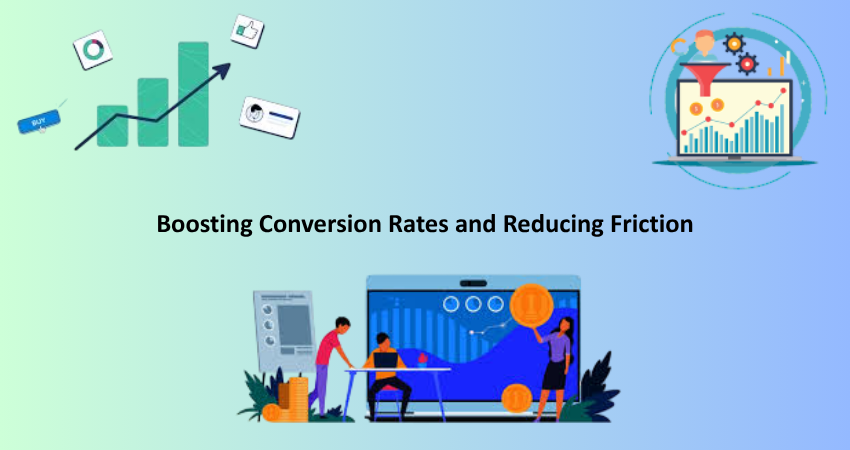
Introduction
User expectations have never been so high in a fast-evolving digital marketplace. E-commerce platforms not only have to offer a broad variety of products but also ensure a seamless and intuitive shopping experience. The filtering system happens to be one key factor that determines how effective that experience may be that is often overlooked. Filters on e-commerce sites are not just nice tools to help users find products; they are also tools for usability, accessibility, and conversion optimization. These empower users to search for products quickly and efficiently, thus greatly enhancing user satisfaction and eventually guiding their purchase decisions.
It’s hard to exaggerate how important filters are. One could do an analogy by imagining walking into a gigantic retail establishment where thousands of items are displayed yet there are no departments or signs to guide the customers-this is exactly what happens when an online store does not integrate a well-structured filtering system. Effective filters give users the ability to refine product lists according to varying categories such as size, color, price, brand, material, or customer ratings. They give a real-time view of product availability, comparing what the user wants to what the store can provide. As competition heats up every single day in the e-commerce space, it’s easier to assume that inadequate efficient filters will lead to a higher bounce rate, more abandoned shopping carts, and money lost. The following article will drive you into the key importance points that filters might add to e-commerce website design in shaping user engagement, search efficacy, and overall success.
Enhancing User Experience Through Intelligent Filtering
Guiding Users to the Right Products Instantly
Filters are one of the validators that make a website design for e-commerce very strong because they can lead users directly to products that match their interest. Today, e-commerce platforms supply thousands of SKUs distributed across a number of categories and without these filters in place, users will have to scroll through thousands of items that are usually a waste of time. Essentially, filters act as personal shopping assistants that allow people to choose their specifications and remove clutter right away. In fact, filters will help a person quickly find that evening red dress that costs less than $100 or a size 10 pair of running shoes, thus increasing the likelihood of purchase.
They are capable of reducing the overloading decision-making process. Customers have a hard time in differentiating between the types of offers when there are many choices and failing to find clear category distinctions. This is harmful to the shopping experience and may deter customers from coming back. So simple filters that logically group and make sense can help in navigation at e-commerce sites without necessarily having to handle overwhelming numbers. It’s even better when it includes the real-time updates of filters as they are applied. Dynamic filtration has proven to be very effective in delivering those results, which are automatically adjusted by the selection of parameters by users over inputs. Overall, intelligent filters create a superfast, not-so-stressful, and personalized e-commerce experience.
Supporting Diverse Shopping Behaviors
An effective filter can also give a breath to the different kinds of shoppers. Well, there are some customers, who know exactly what they want, while others are generally happy to roam and look around. For the task-oriented individuals, filtering functions like a shortcut to reach a desired item. While for searching exploratory shoppers, the filters can allow them to refine their searches gradually by what they learn in the affairs. Thus, it has two applications that can address both ends of the user spectrum resulting in improved general satisfaction and retention rates. A properly attuned filtering system, therefore, includes such diversities and gives the user the ability to control how deep or shallow their searches are.
Filters allow users to browse through many more products than they would typically entertain. A user in search of winter boots may find a waterproof variant they had not considered simply because a feature filter called their attention to it. Such discovery experiences are crucial to enhancing the average order values. In fact, filters can also create an inclusive environment through filtering products based on accessibility options, ethical sourcing, or material types, attributes that matter a lot to conscious consumers. The ability of filters to serve so many preferences and shopping behaviors has made them a must-have in contemporary e-commerce design.
Boosting Conversion Rates and Reducing Friction

Streamlining the Purchase Funnel
Filters are therefore highly critical in forming a clear and direct purchase funnel. The sooner a user can find the product he wants, the more likely he purchases it. All e-commerce platforms must remove as many obstacles to conversion as possible; ineffective search experiences rank among the biggest obstacles. Badly-designed filters can force users to click through multiple pages, go back to redo their searches, or sometimes abandon the site altogether. Well optimized filters, on the contrary, lead to product discovery in a shorter time before making a decision, thus speeding up the path to purchase. This directly translates to higher conversion rates and an increased return on investment for e-commerce businesses.
In addition, filters have diminished cart abandonment. Users frequently abandon e-commerce sites if they cannot easily find what they are looking for or often become frustrated with the navigation process. Intuitive, fast-loading, responsive filters do some of the dispeptic work for a user; to this, one can add features such as breadcrumbs, clear filter labels, and filter removal without page reloads in order to make the overall experience even easier. Realistically speaking, if the user is comfortable in feeling that the shopping journey is being mastered by most means, the chances of conversion will increase quickly. Such filters also add important purchase-related information by showing the availability of stock or popularity of certain products and create that desperation by pushing the user toward conversion.
Improving Mobile Shopping Experience
Since more than half of online purchases around the globe occur across mobile channels, optimizing filters for smaller screens is no longer an option; it has become a must. Mobile devices have their limitations, and traditional filter panels can easily become cramped and clumsy. Good mobile filtering design uses collapsible menus, touch-friendly checkboxes, and sticky filter bars that remain open as the user scrolls down a page; these factors enable users to more easily narrow their search while on the go, which enhances a positive mobile experience and improves conversion rates on handhelds. It is also important for the mobile filters to load fast and give an instant response. Lazy-loads or reloading full pages at every filter selection could break the flow, leading to user abandonment. Progressive filtering may also help, along with smart defaults and persistent states of filters all significantly improving the prowess of mobile-relevant filters. This ensures that their mobile filters are just as thorough and usable as their desktop equivalents, which e-commerce businesses must do to take advantage of the ever-increasing population of mobile-first consumers. The improvement goes beyond customer experience only; it earns revenue from one of the critical segments of the audience.
Strengthening SEO and Site Structure
Enabling Search Engine Crawling of Filtered Pages
In essence, filters are mainly for users, but they have a relevance to SEO. In theory, if they perform their job right, a filter on an e-commerce site can create, with relevant crawling potential, unique landing pages attuned to very specific search queries. A filtered URL, for instance, showing all “women’s red high heels under $100,” can have custom metadata applied and be indexed by the search engines. Hence, e-commerce sites are enabled to rank for long-tail keywords driving laser-targeted traffic. The bottom line is that filters can turn product listings into content-proficient organic traffic magnets for the benefit of site visibility.
On the other hand, if filters are not managed, they can present more problems for SEO: duplicate content or crawl budget wastage. Filter combinations without canonical tags or URL parameter handling will downplay the search engines’ view and dilute the ranking potential. The mantra is to build a filtering architecture in such a way that allows the indexation of valuable filter pages while blocking the irrelevant or repeated combinations. Google Search Console and robots.txt with meta directives help guide search engines to crawl the site properly. When implemented well, filters provide a great user experience while strengthening the SEO efforts of a website.
Improving Internal Linking and Site Hierarchy
Fliters also do the filtering for the whole architechture more so improving the internal links and navigation of the site. A proper filtering system within a site has the potential to organize various products under different categories and also sub-categories for easier understanding of the relationship among the site. This has a positive effect in making it easier for increasing the page authority, link equity distribution, and better crawlability. Example: breadcrumb navigation corresponding to the filtered trails, helping users realize their location on the site while motivating them to explore deeper thereby spoon-feeding engines additional clues about the hierarchy of the site.
In addition, these filtered pages can be interlinked extensively through blog posts, categorization, or promotional campaigns, thereby forming a coherent map of internal links-the success of which, in turn, helps to boost user engagement metrics such as time on site and pages per session, which are indirectly beneficial for SEO. Furthermore, search engines favor websites with organized and easily navigable content. Through intelligent filtering, then, the information architecture is improved, and the e-commerce sites enhance usability while also undoubtedly creating a foundation for organic growth in the longer term.
Gaining Actionable Insights From User Behavior

Tracking Filter Usage for Better Decision Making
The ability to track and analyze user interaction with the filters qualifies for one of the e-commerce design features’ most underrated benefits. It gives a store valuable insights into customers’ preferences, shopping trends, and pain points through monitoring filter usage. If most users visit the filter “price under $50,” then that indicates high sensitivity to price in the target audience. In that way, frequent searching with brand-centric filters shows you the most popular suppliers. Such data enable inventory optimization, tailor marketing, even product development.
High-end analytical solutions further permit attaching filter data with parameters such as time of day, device, geographical location, and conversion rates-all making that real difference with regard to a well-rounded user behavior picture. Such insights provide a lot of information to the e-commerce businesses, influencing quite a number of decisions from product placement and promotional timelines to personalized recommendations. Filters that are not used frequently would probably be removed or rephrased. Popular filters, on the other hand, are likely to become more visible. In keeping with usage data, the filters will continue to be improved by bringing them into alignment with consumer expectations, and thus add immeasureable value to future journeys of effective shopping.
Enabling Personalization and Dynamic Recommendations
Yes, filters facilitate a customized experience in e-commerce in that they allow a site to track the filter options selected by users over time to create a user portrait, which later would be employed to personalize content served at future visits-. This level of personalization will definitely increase product suggestions’ relevance, click rates, and, eventually, conversion rates. For example, it can remember the size or color by which the user tends to filter and thus target pitches of products tailored by those attributes or even pre-filter the results.
On the flip side, machine learning algorithms can use the filter interaction data to power dynamic recommendation engines-the engines that analyze what filter patterns are across thousands of users to figure out what combinations lead to successful purchases. Thus, they will alert the products which match with trending filters and suggest new ones based on the collective behavior. This predictive personalization enhances the shopping experience and, therefore, increases revenue through upselling and cross-selling opportunities. Hence, by bringing together filters and personalization vehicles, e-commerce platforms can stay one step ahead of user expectations and provide a more immersive digital storefront.
Conclusion
More than just a technical detail in designing an e-commerce website, filters are central to the success of any online store. They improve user experience and facilitate the buyer journey and can enhance SEO while allowing for excellent analytics capability. More than this, they influence almost all dimensions of e-commerce performance. A convenience-based and relevant-but-personalized approach is what will keep customers in the digital marketplace. Inability to offer such filtering options puts opportunities at risk and leaves many users unsatisfied.
Well-structured, responsive, and intelligently-designed filters will enable customers to shop in a more intuitive manner, improve conversion rates, and provide actionable data for strategic growth. Easily usable, online filters convert online product discovery from a laborious chore to a seamless experience. And as e-commerce changes, so filter usability and functionality will be the foundation of future successful digital retail design.